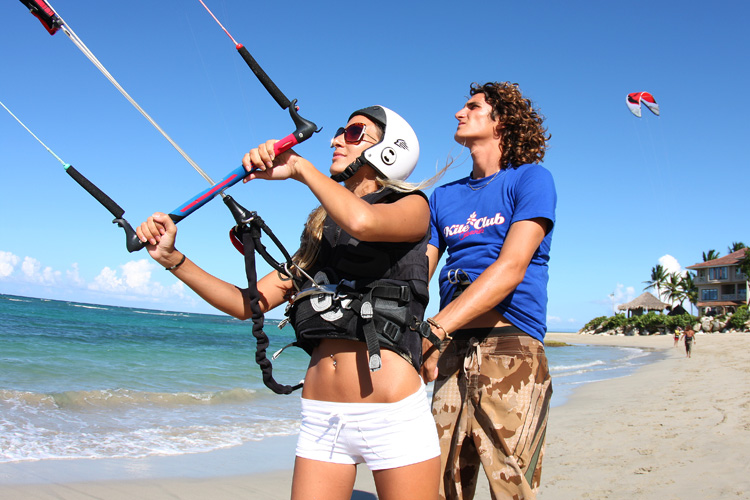Kiteboarding is an exciting sport but can be dangerous if you don't follow basic rules and guidelines. That is why teaching how to ride a kite should follow a few strict guidelines.
The wind is a powerful force. Its destructive and sometimes unpredictable behavior can easily kill humans while they're having fun.
Unfortunately, dozens of kiteboarders have lost their lives while sailing in coastal regions and open seas.
Learning how to kiteboard in a certified kite school is mandatory. What if there weren't specific rules for kitesurfing schools?
Who would decide who a professional kite instructor is? Is there a standard rule book for kitesurfing lessons?
Just like in surfing, the International Kiteboarding Association (IKA) has defined official kitesurfing guidelines for schools, coaches, and instructors.
If you want to be a kiteboarder, you no longer have to make choices based on trust.
Questions like, "Does your local kite school have a clean record? How many riders have they formed?" are no longer your evaluation filter.
IKA has set standards, regulations, and directives for teaching kiteboarding. In the end, you just want to know how to choose the right kitesurfing school.
In other words, you need a proper kitesurfing lesson plan to become an accomplished wind enthusiast with the necessary experience and safety knowledge.
Kiting Lessons 101
Here's what kiteboarding lessons should teach and include:
- Water conditions: is it flat, choppy, big, or small? Are there rip currents and hidden rocks?;
- Beach hazards: know the obstacles. Are there piers, statues, buildings, or beach umbrellas?;
- Global weather conditions: is it sunny, rainy, or cloudy? How are the wind and waves?;
- Flight and landing condition: are you riding on an open beach, or are there multiple obstacles in the water and on the beach?;
- How wind and wave are formed: learn the basic variables of the elements;
- Wind and wave forecast tools: what are wind gusts, what is swell period, where can you check the forecast?;
- Beaufort Wind Scale: learn how to assess wind speed and sea conditions rapidly;
- The Wind Window: learn why kites fly in the area downwind of the pilot;
- Types of kitesurfing kites: inflatable kites, bow kites, C kites, foil kites, open and closed cell kites;
- Types of control bars: four-line and five-line bar systems;
- Types of kiteboards: twin tip, freestyle board, wave board, race board, foil board;
- Understanding how does a kite fly: the science behind kiteboarding;
- Rigging up: set up your gear and check safety procedures;
- Launching and landing a kite: how and when to ride and stop;
- Flight techniques: control the kite, understand how to generate power, stability, and direction;
- Water re-launch: learn how to fly again if a kite crashes;
- Turning and jibing: master the skill of changing direction;
- Riding toeside: don't burn your back leg on longer tacks;
- Self-rescue and safety pack down: use your kite as a sail to get back to the beach;
- Right-of-way rules: avoid collisions with other riders and swimmers;
